Texas Housing Insight March 2022 Summary
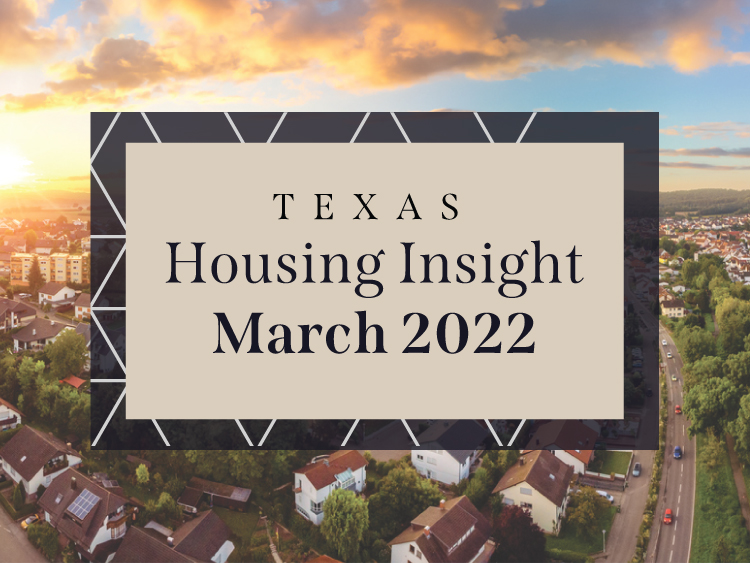
Total Texas housing sales continued to grow, increasing by 3.4 percent in the first quarter. Sales were concentrated on homes priced over $300,000. The constrained inventory in the lower-priced cohort pushed the median housing prices to a record-breaking level. Despite rising mortgage rates, housing market demand remains robust, driven largely by demographics. As building material […]
Texas Housing Insight February 2022 Summary

Texas’ housing market fell slightly in February as supply constraints continued pushing downward on the market, and mortgage rates increased. February sales and active listings were both down, resulting in an inventory level of about one month. Housing starts rose despite the continued surge in building material prices and dip in permits. The greatest challenge […]
April 2022 DFW Area Real Estate Stats
April stats are here and we have the numbers! The housing market in North Texas continues to be hot! New listings are up consistently in all five counties over March 2022 as the Spring market continues to heat up. Despite higher mortgage rates, demand remains strong in North Texas. Average sales prices are up ranging […]
Texas Housing Insight January 2022 Summary
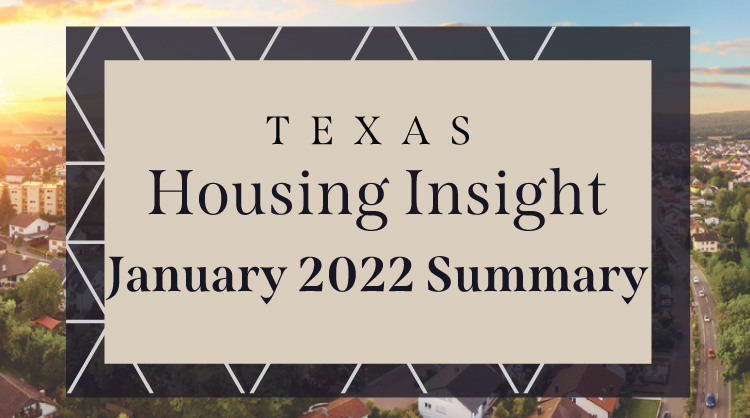
Texas housing sales continued to rise in January, compounding gains despite ongoing supply constraints. The months of inventory (MOI) slid to 1.4 months, putting downward pressure on the market. Single-family permits, however, increased, and housing starts continued to rise despite steep price hikes in lumber and other building inputs. Finding homes priced below $300,000 remained […]
March 2022 DFW Area Real Estate Stats

https://youtu.be/hk9YJpXtec4 March stats are here and we have the numbers! The Spring selling season is underway, and the market reflects that with new listings up in all five counties, though they are just slightly down from March 2021. The average days on market continues to drop each month and averages 21 days in Collin, Dallas, […]
Texas Housing Insight 2021 Annual Summary
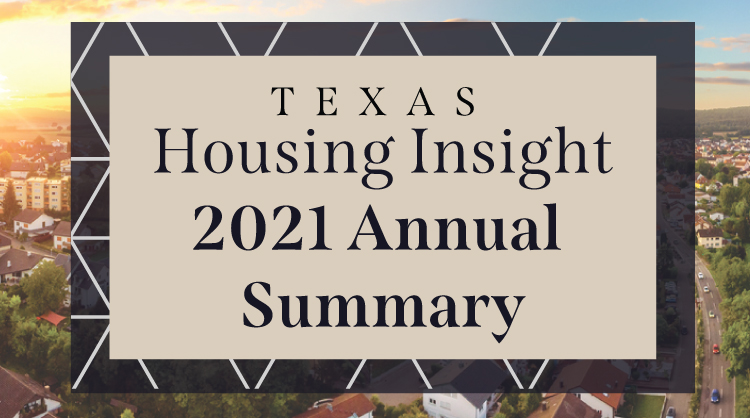
The Texas housing market was strong for most of 2021 as mortgage interest rates remained low throughout the year. Sales accelerated, and the average home price increased. Demand remained robust as households desired additional space and better neighborhoods. On the other hand, while new listings increased in 2021, the pace wasn’t enough to keep up with demand, […]
February 2022 DFW Area Real Estate Stats
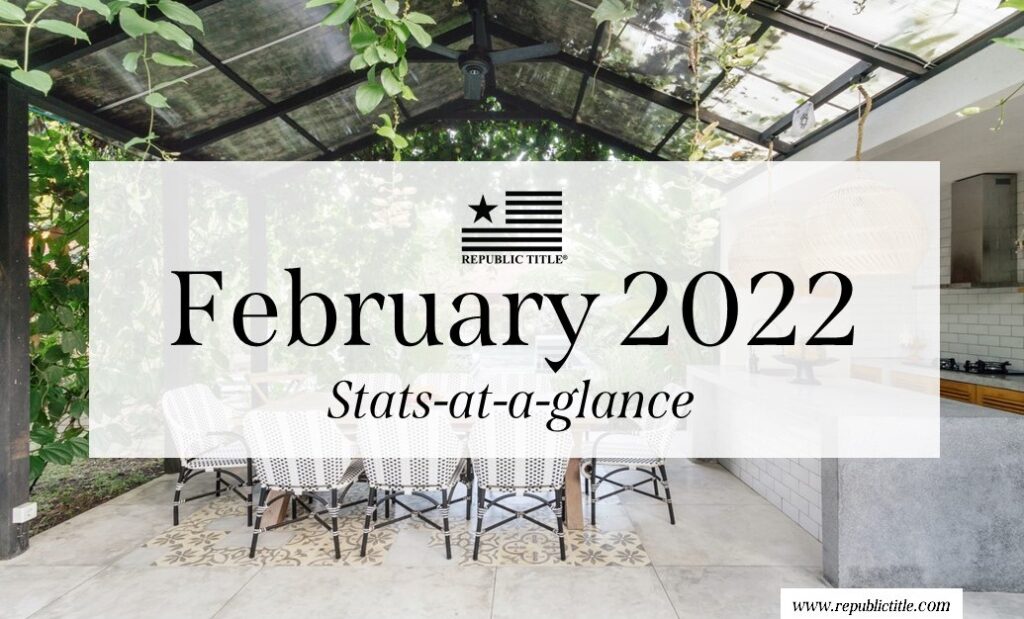
https://youtu.be/rzrdV3YxgRc February stats are here and we have the numbers! Our stats infographics include a year over year comparison and area highlights for single family homes and condos broken down by MLS area. We encourage you to share these infographics and video with your sphere. For more stats information, pdfs and graphics of our stats including detailed […]
Texas Housing Insight November 2021
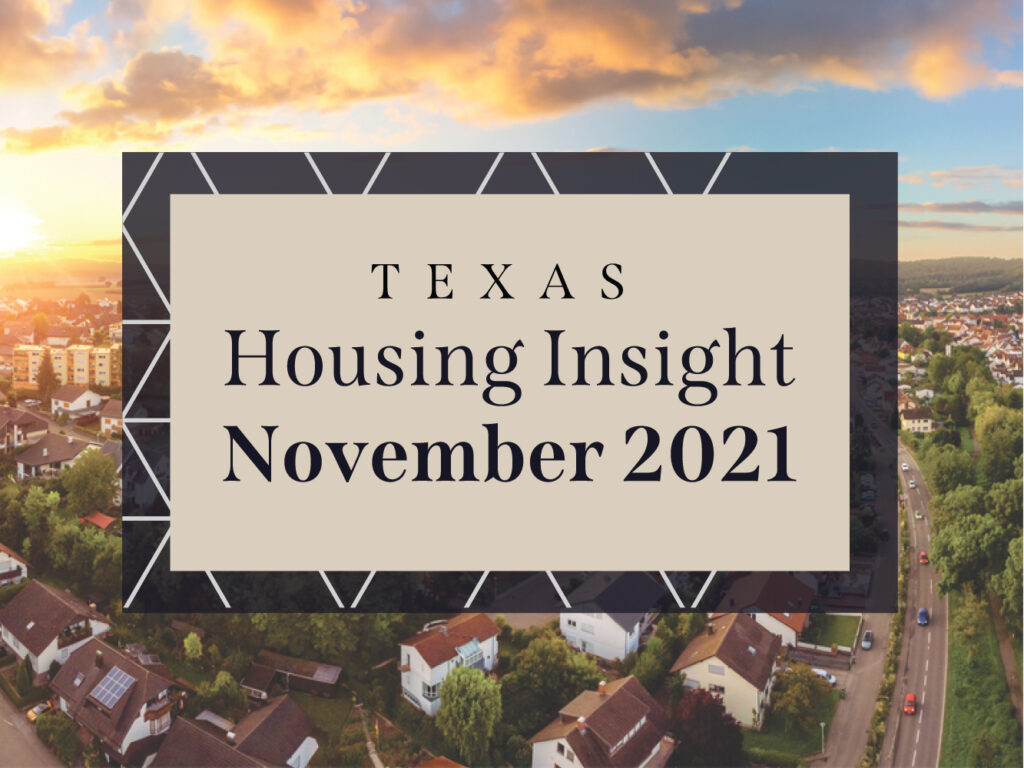
Texas’ housing market continued to rise in November, trending upward despite ongoing supply constraints. Months of inventory slid to 1.5 months, and single-family permits weakened. Housing starts, however, expanded despite lumber and other input price increases. The lack of inventory for homes priced under $300,000 remains the greatest challenge to Texas’ housing market. Demand remained […]
January 2022 DFW Area Real Estate Stats
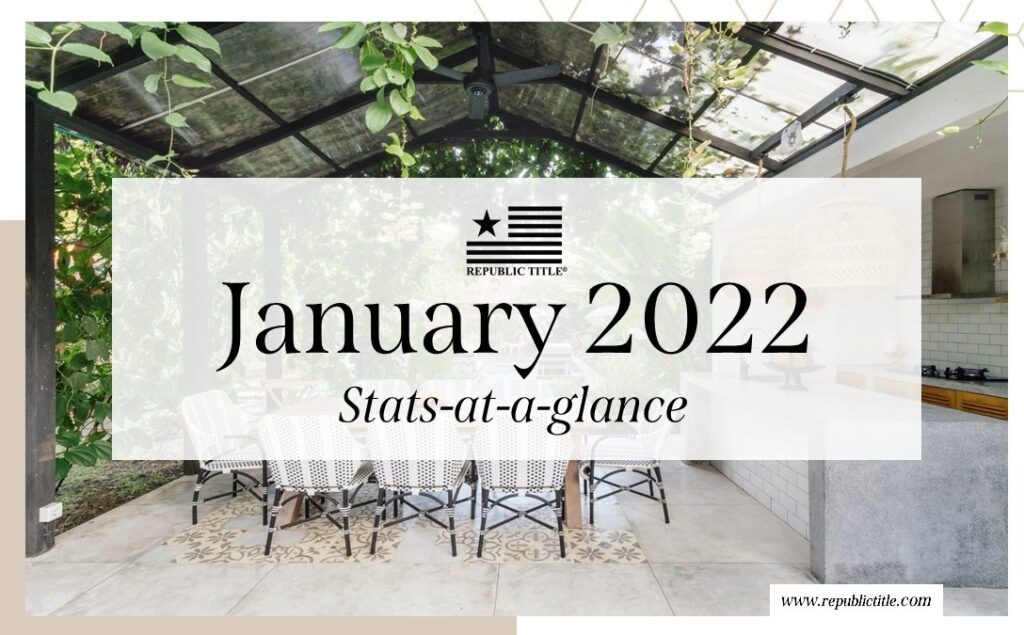
January stats are here and we have the numbers! Our stats infographics include a year over year comparison and area highlights for single family homes and condos broken down by MLS area. We encourage you to share these infographics and video with your sphere. For more stats information, pdfs and graphics of our stats including detailed information […]
2021 DFW Real Estate Year-End Stats at a Glance
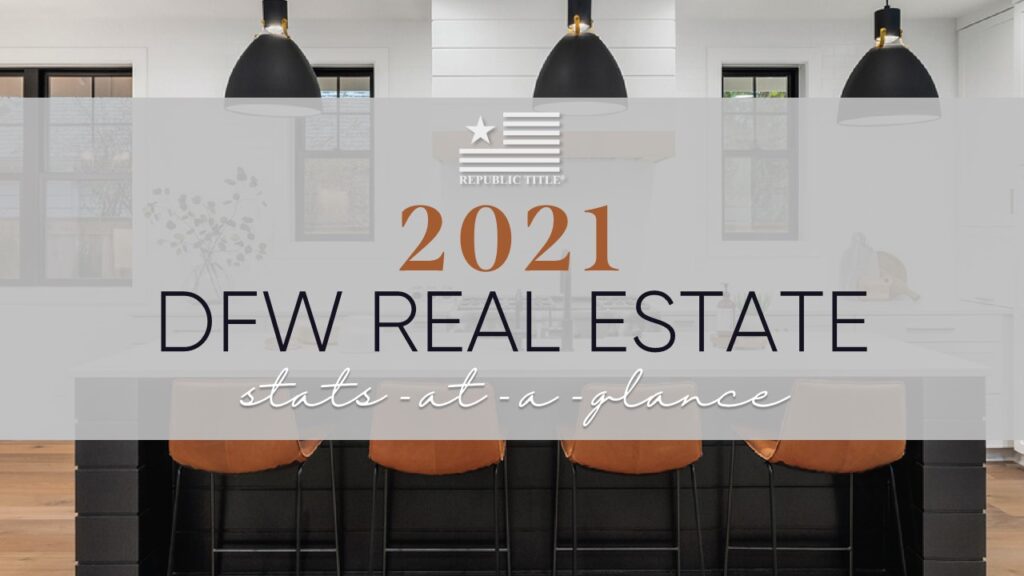
We’ve taken our monthly stats-at-a-glance reports from January through December of 2021, totaled, averaged, and compared the data to the numbers from 2020. The result is an annual report of the DFW area real estate market in 2021. The annual totals reiterate the lack of inventory we saw in 2021, indicating a very strong seller’s […]
